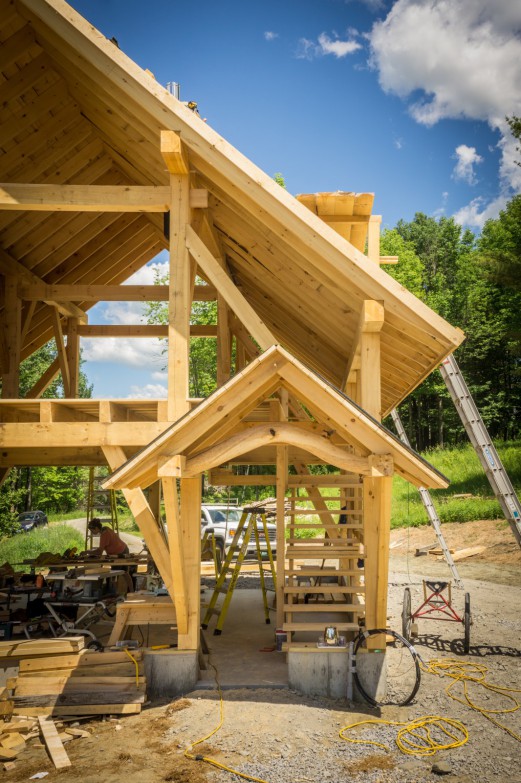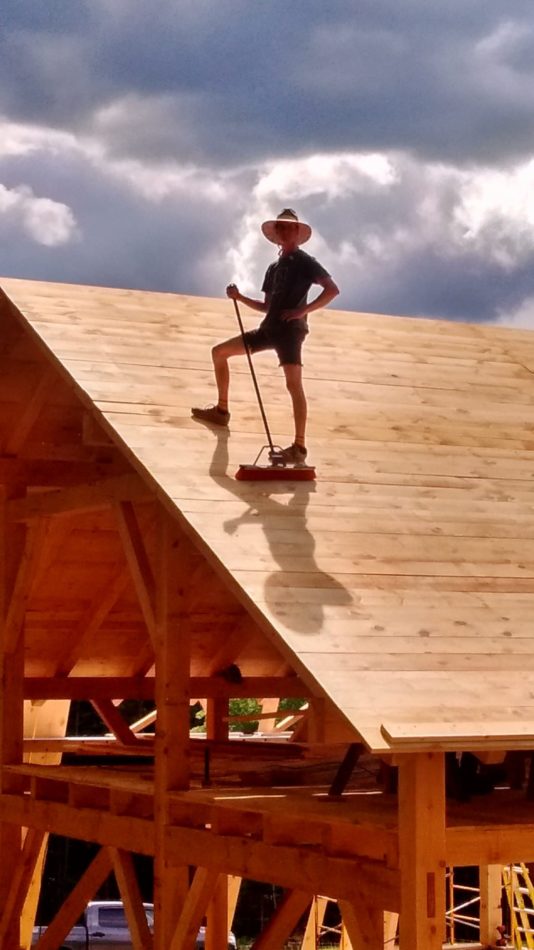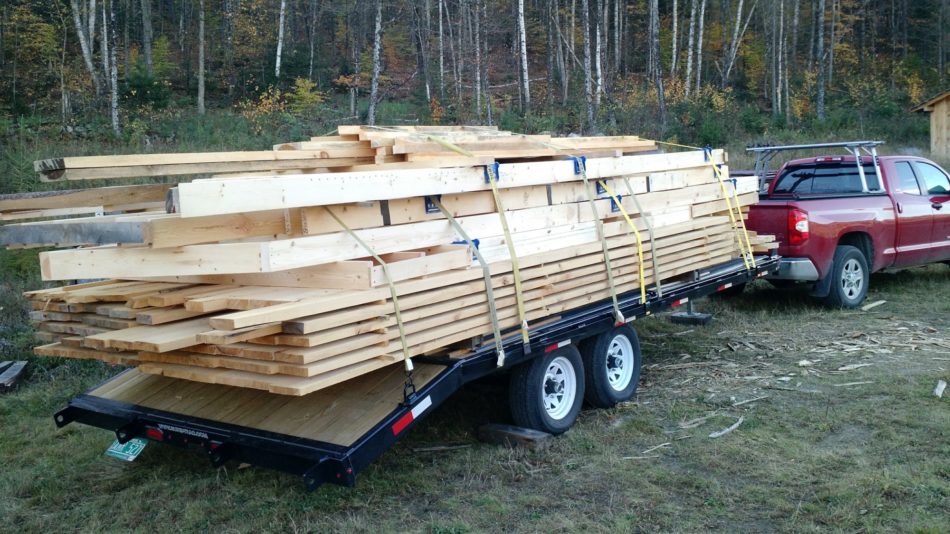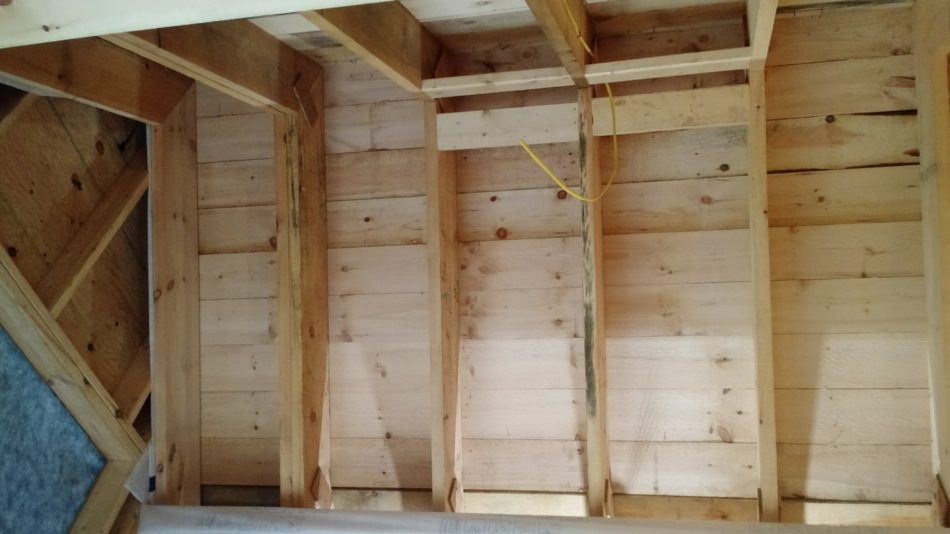What does it mean to build “green”? While it’s true that most of us are interested in the merits of being “eco friendly” or building “sustainably”, there is a great deal of ambiguity behind such terms. The construction world offers a plethora of products, both good and bad, to use at every step of the building process. From foundations to framing stock; sheathing to trim; insulation to paints; the decisions to be made are endless. The equation becomes decidedly more complex if one stops to consider each product’s effect on the environment, economy, or your health.
At TimberHomes, our focus on the use of local wood products is a pillar of our notion of what it means to be green. To build our structures, we rely on locally sourced and sawn White Pine (and sometimes Hemlock) as our principle timber stock. While some timber framers opt to use Western Red Cedar or Douglas Fir, we see using timbers from the trees that are growing around us as the correct path. Consider the thousands of miles between Vermont and California and the 6 or so miles per gallon that a loaded 18-wheeler gets today. Couple this with the multiplier effect on the local economy of keeping our dollars close to home and the choice becomes clear.
When enclosing our timber frames, we also try to use rough sawn boards as much as possible. As roof and wall sheathing or as subfloors, “rough cut” offers some important environmental advantages to the use of plywood or Oriented Strand Board (OSB). Much like with Western timbers, using such sheet products typically means hundreds of miles of transport, and supporting economies which are often far from our own.
The rough sawn boards and timbers we use are “minimally processed” which means that they are not kiln dried or planed. The embodied energy, or the energy needed to produce a product, is by one estimate as much as eight times higher for kiln dried materials than that of rough cut. Again, this typically translates into rough cut materials requiring far less fossil fuel.
Beyond the kiln drying issue, minimally processed wood products offer advantages in terms of the environment within your home. Most plywood type sheet goods use formaldehyde based glues to hold their products together. The EPA has classified such materials as “probable” human carcinogens that are released by cutting and handling the materials and by the process of off gassing.
The Obama administration moved to limit the use of formaldehyde in plywood production, and there are some new generation products available. However, there is the worry that some of the sheet products coming from abroad are not held to a high standard. Again, using the local material makes the most sense.
While at TimberHomes we do on occasion use plywood and other highly processed materials, we try our utmost to limit their use. Being green is complex issue, and we are also still trying to figure out how to do better. To us, rough sawn wood products are an essential building block to a healthy workspace, home, and local economy.





